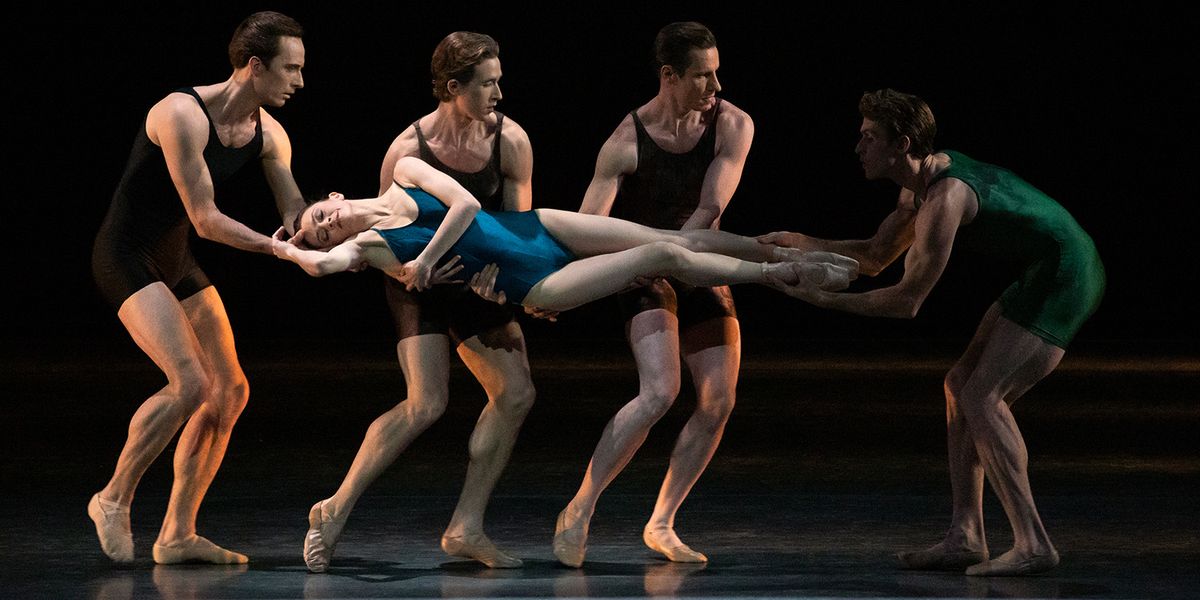Ratmansky Brings Witty Postmodern Rule-Breaking to Ballet in His New Voices
With the premiere of Voices at New York City Ballet, Alexei Ratmansky has challenged ballet conventions in breathtaking ways. Can we now count him as a “postmodern” choreographer? In the areas of music, gender and curtain behavior, he has wittily dashed expectations.
Just as pianist Stephen Gosling begins to play, you hear a voice speaking on recording. It’s not what you expect after the whole orchestra has just played Prokofiev for the previous piece. At first, composer Peter Ablinger’s score sounds like the voice and piano are battling each other. But as you listen, the mingling of the two allows you to absorb a distinct, erratic rhythm along with shards of verbal material.
By smashing piano and spoken voice together, Ablinger creates a highly textured soundscape for the five women’s solos. Each solo is dense with tricky legwork and sudden changes, and each solo relies on the voice of a different woman for rhythm and timbre. (The voices, selected from Ablinger’s larger work Voices and Piano, include Bonnie Barnett announcing a radio program and Nina Simone talking about civil rights.)
Each woman ends her solo in a final act of defiance when she breaks through a wall formed by four or five men with linked arms charging into the space.
 Sara Mearns with a wall of men behind her
Sara Mearns with a wall of men behind her
Erin Baiano, Courtesy NYCB
After each solo, Ablinger’s soundscape disappears. One man is left onstage to display a single virtuosic step, repeated over and over—in silence. The first time it’s a manège of barrel turns; during the second silence it’s a diagonal of brisé volés, and so on.
In the usual narrative ballet, pyrotechnics are accompanied by climactic music and automatic applause. To watch spectacular jumps and turns whipped off in silence is to feel contradictory impulses: You want to clap for the high-tech steps and you want to laugh because of the chutzpah of cancelling out the bombastic music. These heroic steps are no longer heroic. They become almost meditative, or, as one friend put it, they are the sorbet that clears the palate.
 Georgine Pazcoguin
Georgine Pazcoguin
Erin Baiano, Courtesy NYCB
The heroes are the women. What they do is difficult, generous, elusive, full-bodied, and mapped onto a real woman’s voice. With all the complex changes and emotional input, each dancer goes for broke.
Regarding the opening and closing of the curtain: In the beginning, only part of the curtain opens to reveal the first soloist. As the ballet comes to a close, all 10 dancers are curled up in a row downstage. They start to unfurl, one at a time, into a kneeling arabesque—like dominoes, but instead of falling, they are opening up. The curtain starts descending and we can see that there won’t be time for the last few dancers to unfurl. Solution: Pause the curtain just above the dancers until every single one has completed their shape.
As the curtain is hovering, we hear a sliver of the painter Agnes Martin’s voice: “I object to being called a mystic. You’re not a mystic when you respond to beauty.”




